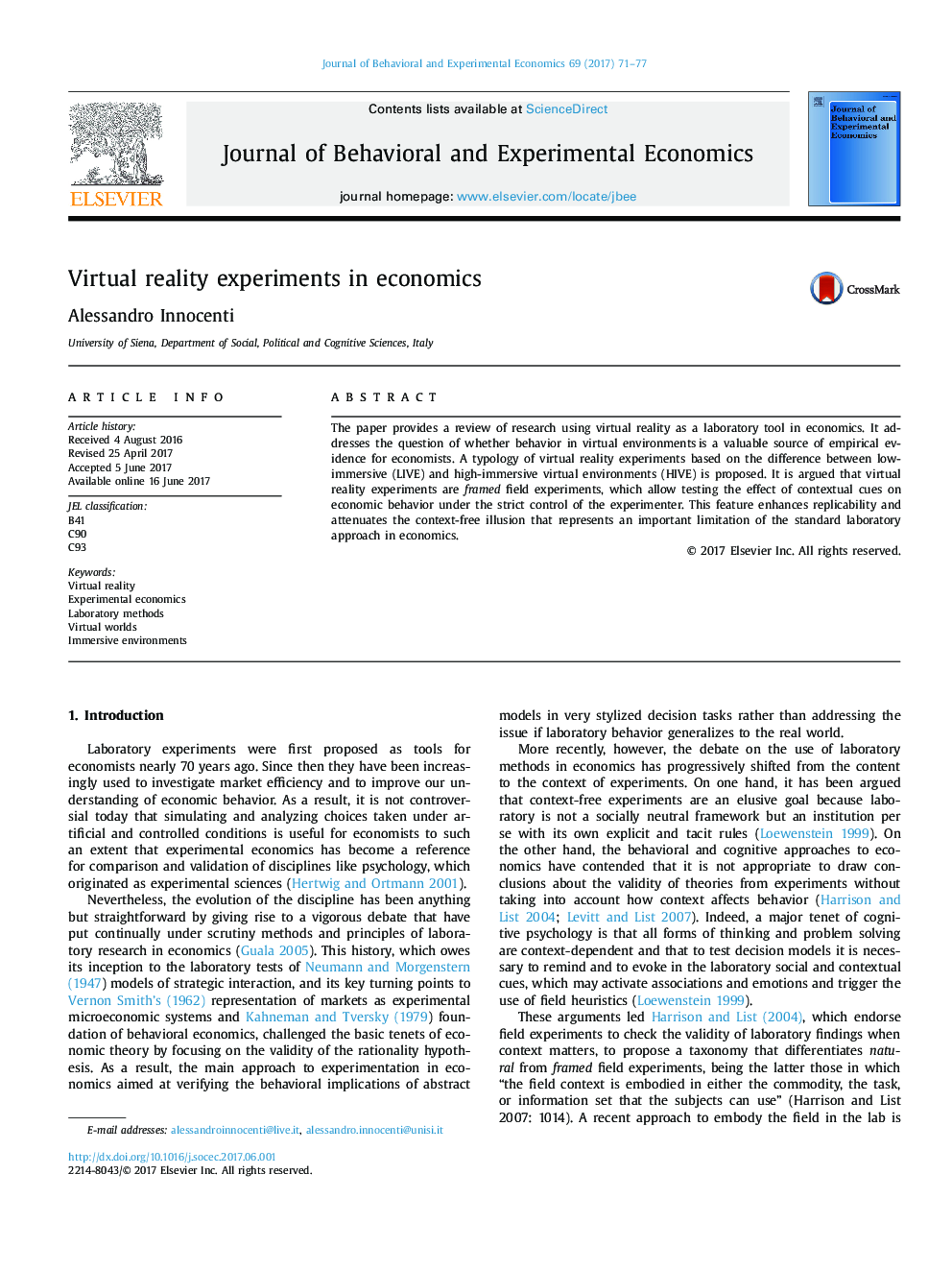| Article ID | Journal | Published Year | Pages | File Type |
|---|---|---|---|---|
| 5034122 | Journal of Behavioral and Experimental Economics | 2017 | 7 Pages |
â¢A review of research using virtual reality as a tool in experimental economics is provided.â¢A typology of virtual reality experiments based on the difference between low-immersive (LIVE) and high-immersive virtual environments (HIVE) is proposed.â¢It is argued that virtual reality experiments are framed field experiments, which allow testing the effect of contextual cues on economic decision-making under the strict control of the experimenter.â¢This feature enhances replicability and attenuates the context-free illusion that represents an important limitation of the standard laboratory approach in economics.
The paper provides a review of research using virtual reality as a laboratory tool in economics. It addresses the question of whether behavior in virtual environments is a valuable source of empirical evidence for economists. A typology of virtual reality experiments based on the difference between low-immersive (LIVE) and high-immersive virtual environments (HIVE) is proposed. It is argued that virtual reality experiments are framed field experiments, which allow testing the effect of contextual cues on economic behavior under the strict control of the experimenter. This feature enhances replicability and attenuates the context-free illusion that represents an important limitation of the standard laboratory approach in economics.
